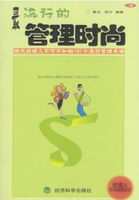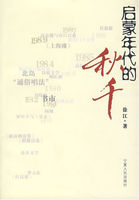There is evidently a certain vertical component that tends to cause the stick to descend, but the lateral pressure produces a sufficient friction between the hand and the stick to support this vertical force without difficulty.Mr.Perry performed the experiment by placing himself upon a spring balance and assuming the role of the girl, with two very strong men as adversaries.All the efforts made to cause the stick to slide in the open hand failed, and the excess of weight due to the vertical force always remained less than twenty-five pounds, despite the very determined and sincere stresses of the two men, who, unbeknown to themselves, were exerting their strength in a HORIZONTAL direction.
In the experiment represented in Fig.
3, which recalls to mind the first one (Fig.
1), the two men are requested to hold the stick firmly and immovable, but the slightest pressure upon the extremity suffices to move the arms and body of the subject.
Such pressure in the first place is exerted but slightly, and the stresses are gradually increased.Then, all at once, when the force exerted horizontally is as great as possible, and the men are exerting their strength in the opposite direction in order to resist it, the girl abruptly ceases the pressure WITHOUT WARNING and exerts it in the OPPOSITE DIRECTION.Unprepared for this change, the victims lose their equilibrium and find themselves at the mercy of the girl, and so much the more so in proportion as they are stronger and their efforts are greater.The experiment succeeds still better with three than with two men, or with one man.
The experiment represented in Fig.4, where it concerns the easy lifting of a very heavy person, the trick is no less simple.Out of a hundred persons submitted to the experiment, ninety-nine, knowing that the experimenter wishes to lift them and cause them to fall forward, grasp the seat or arms of the chair, and, in endeavoring to resist, make the whole weight of their body bear upon their feet.
If they do not do so at the first instant, they do so when they are conscious of the attempts of the girl to raise the seat, and they help therein unconsciously.The experimenter, therefore, needs only to exert a horizontal thrust, without doing any lifting, and such horizontal thrust is facilitated by taking the knees as points of support for her elbows.As soon as a slight movement is effected, the hardest part of the work is over, for it is only necessary for the girl to cease to exert her stresses in order to have the chair fall back or move laterally in one direction or the other.At all events, the equilibrium is destroyed, and, before it is established again, it requires but little dexterity to move the subject about in all directions without a great expenditure of energy.
The difficulty is not increased on seating two men, or three men, upon each other's knees (as shown in Fig.4), since, in the latter case, the third acts as a true counter-poise to the first, and the whole pretty well resembles an apparatus of unstable equilibrium, whose centre of gravity is very high and, consequently, so much more easily displaced.
All these experiments require some little skill and practice, but are attended with no difficulty, and, upon the whole, do not merit the enthusiastic articles that have given the ``electric'' or ``magnetic''
girl her European reputation.
Strong people, whether tricksters or genuine athletes, or both, we shall probably have always with us.But with the gradual refinement of the public taste, the demand for such exhibitions as fire-eating, sword-swallowing, glass-chewing, and the whole repertoire of the so-called Human Ostrich, steadily declined, and I recall only one engagement of a performer of this type at a first-class theater in this country during the present generation, and that date was not played.
There was still a considerable demand for these people in the dime museums, until the enormous increase in the number of such houses created a demand for freaks that was far in excess of the supply, and many houses were obliged to close because no freaks were obtainable, even at the enormous increase in salaries then in vogue.The small price of admission, and the fact that feature curios like Laloo or the Tocci Twins drew down seven or eight hundred dollars a week, show that these houses catered to a multitude of people;and not a few of the leading managers of to-day's vaudeville, owe their start in life to the dime museum.
Among the museums that were veritable gold mines, I might mention Epstein's of Chicago; Brandenberg's of Philadelphia;Moore's of Detroit and Rochester; The Sackett and Wiggins Tour; Kohl and Middleton's;Austin and Stone's of Boston; Robinson of Buffalo; Ans Huber's, Globe, Harlem, Worth's, and the Gayety of New York.
The dime museum is but a memory now, and in three generations it will, in all probability, be utterly forgotten.A few of the acts had sufficient intrinsic worth to follow the managers into vaudeville, but these have no part in this chronicle, which has been written rather to commemorate some forms of entertainment over which oblivion threatens to stretch her darkening wings.
End















